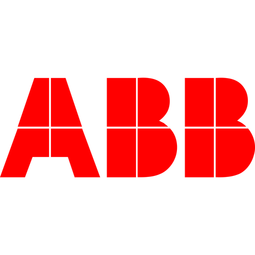Siemens
匠心一生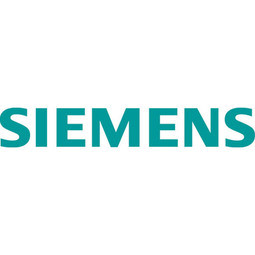
概述
公司介绍
西门子是欧洲最大的工程公司。凭借其在电气化价值链上的定位,西门子拥有从发电到输电、配电和智能电网再到电能高效应用的专有技术。特色子公司/业务部门: - 数字化工厂 - 西门子技术对企业 (TTB)
物联网解决方案
主要客户
ARUP Laboratories、Digital Realty、密歇根大学、HP、Polar Electro、Electrolux、ROJ Electronics Srl、Tokamak Energy、Grissom 高中、Zipline、Bye Aerospace。
子公司
物联网应用简介
Siemens 是平台即服务 (paas), 分析与建模, 功能应用, 网络安全和隐私, 网络与连接, 处理器与边缘智能, 传感器, 和 自动化与控制等工业物联网科技方面的供应商。同时致力于航天, 汽车, 电池, 建筑物, 水泥, 化学品, 消费品, 教育, 电网, 电子产品, 设备与机械, 金融与保险, 食品与饮料, 玻璃, 医疗保健和医院, 海洋与航运, 矿业, 石油和天然气, 药品, 铁路与地铁, 零售, 运输, 和 公用事业等行业。
技术
用例
功能区
行业
服务
技术栈
Siemens的技术栈描绘了Siemens在平台即服务 (paas), 分析与建模, 功能应用, 网络安全和隐私, 网络与连接, 处理器与边缘智能, 传感器, 和 自动化与控制等物联网技术方面的实践。
-
设备层
-
边缘层
-
云层
-
应用层
-
配套技术
技术能力:
无
弱
中等
强

Supplier missing?
Start adding your own!
Register with your work email and create a new supplier profile for your business.
实例探究.

Case Study
Automation of the Oguz-Gabala-Baku water pipeline, Azerbaijan
The Oguz-Gabala-Baku water pipeline project dates back to plans from the 1970’s. Baku’s growth was historically driven by the booming oil industry and required the import of drinking water from outside of the city. Before the construction of the pipeline, some 60 percent of the city’s households received water for only a few hours daily. After completion of the project, 75 percent of the two million Baku residents are now served around the clock with potable water, based on World Health Organization (WHO) standards. The 262-kilometer pipeline requires no pumping station, but uses the altitude differences between the Caucasian mountains and the capital to supply 432,000 m³/d to the Ceyranbatan water reservoir. To the people of Baku, the pipeline is “the most important project not only in 2010, but of the last 20 years.”

Case Study
Battery manufacturer Industrial Digital Twin
For optimum control of product quality, Banner relies on a high production depth. Its 560 production employees produce nearly all the components in¬-house that they need to make finished batteries on Banner’s six assembly lines. This includes the plastic parts for the battery cases as well as the paste-filled lead oxide grids. Their production involves two to five¬ days rest in maturing chambers to create optimum current absorption and storage capacity. Banner’s ongoing success was accompanied by a continuous, organic growth of the production facilities, adding or extending hall after hall until the complex filled the site that had seemed ever so spacious when the company moved here from a smaller place in 1959. These developments led to a heterogeneous production environment. “This confronts us with significant challenges, particularly concerning intra¬logistics issues, such as scheduling for the maturing chambers,” says Franz Dorninger, technical director at Banner. “We contemplated various ways to overcome this problem, including relocating to new premises.”

Case Study
Integral Plant Maintenance
Mercedes-Benz and his partner GAZ chose Siemens to be its maintenance partner at a new engine plant in Yaroslavl, Russia. The new plant offers a capacity to manufacture diesel engines for the Russian market, for locally produced Sprinter Classic. In addition to engines for the local market, the Yaroslavl plant will also produce spare parts. Mercedes-Benz Russia and his partner needed a service partner in order to ensure the operation of these lines in a maintenance partnership arrangement. The challenges included coordinating the entire maintenance management operation, in particular inspections, corrective and predictive maintenance activities, and the optimizing spare parts management. Siemens developed a customized maintenance solution that includes all electronic and mechanical maintenance activities (Integral Plant Maintenance).

Case Study
Siemens | Using Machine Learning to Get Machines to Mimic Intuition
The ability to learn is a precondition for autonomy. With this in mind, Siemens researchers are developing knowledge networks based on deep learning-related simulated neurons and connections. Such networks can be used to generalize information by identifying associations between extraordinarily complex realms, such as the publicly accessible Internet and a company’s internal information systems. Far-reaching and generic, this technology appears to hold the potential of mimicking what humans call intuition.

Case Study
Artificial Intelligence and the implications on Medical Imaging
There are several factors simultaneously driving integration of AI in radiology. Firstly, in many countries around the world there is a discrepancy between the number of doctors trained in radiology and the rising demand for diagnostic imaging. This leads to greater demands for work efficiency and productivity. For example, the number of radiology specialists (consultant work- force) in England went up 5% between 2012 and 2015, while in the same period the number of CT and MR scans increased by 29 and 26 percentage points respectively. In Scotland, the gap widened even further (The Royal College of Radiologists 2016). Today, the average radiologist is interpreting an image every three to four seconds, eight hours a day (Choi et al. 2016).Secondly, the image resolution of today’s scanners is continuously improving – resulting in an ever greater volume of data. Indeed, the estimated overall medical data volume doubles every three years, making it harder and harder for radiologists to make good use of the available information without extra help from computerized digital processing. It is desirable, both in radiological research and in clinical diagnostics, to be able to quantitatively analyze this largely unexploited wealth of data and, for example, utilize new measurable imaging biomarkers to assess disease progression and prognosis (O’Connor et al. 2017). Experts see considerable future potential in the transformation of radiology from a discipline of qualitative interpretation to one of quantita- tive analysis, which derives clinically relevant information from extensive data sets (“radiomics”). “Images are more than pictures, they are data,” American radiologist Robert Gillies and his colleagues write (Gillies et al. 2016). Of course, this direction for radiology will require powerful, automated procedures, some of which at least will come under the field of artificial intelligence.
同类供应商.
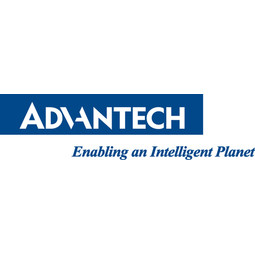
Supplier
Advantech
Founded in 1983, Advantech is a leader in providing trusted innovative embedded and automation products and solutions. Advantech offers comprehensive system integration, hardware, software, customer-centric design services, and global logistics support; all backed by industry-leading front and back office e-business solutions.
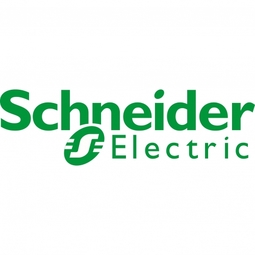
Supplier
Schneider Electric
Schneider Electric is a leading global manufacturer of equipment for electrical power distribution and for industrial control and automation. The company helps power generators distribute electricity; designs automation systems for the automobile and water treatment industries; builds electric networks and utility management systems for energy, water treatment, oil and gas, and marine applications; and manages electric power in residential, industrial, and commercial buildings.Year founded: 1836Revenue: $26.0 billion (2014)EPA: SUFeatured Subsidiaries/ Business Units:- Avantis- Wonderware
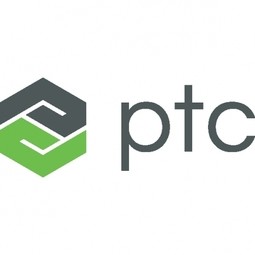
Supplier
PTC
PTC is a global provider of technology platforms and solutions that transform how companies create, operate, and service the "things" in the Internet of Things (IoT). The company's next-generation ThingWorx technology platform gives developers the tools they need to capture, analyze, and capitalize on the vast amounts of data being generated by smart, connected products and systems. The company's field-proven solutions are deployed in more than 26,000 businesses worldwide to generate a product or service advantage. PTC's award-winning CEO, considered an industry thought leader, co-authored the definitive guides to the impact of the IoT on business in the Harvard Business Review.
合作伙伴.

Supplier
IBM
IBM is an American multinational technology and consulting corporation that manufactures and markets computer hardware, middleware, and software, and offers infrastructure, hosting, and consulting services in areas ranging from mainframe computers to nanotechnology. IBM is intent on leading the development of a global data field.
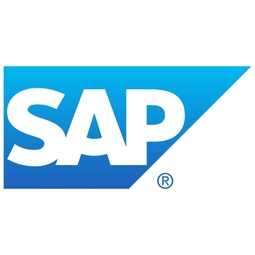
Supplier
SAP
SAP is the leading provider of enterprise resource planning (ERP) software used to integrate back-office functions such as distribution, accounting, human resources, and manufacturing. The backbone of SAP's products has been its On-Premise offerings, spearheaded by its Business Suite, which includes ERP and customer relationship management (CRM) software, among others. Year founded: 1972 Revenue: $17.6 billion (2014) NYSE: SAP

Supplier
Huawei
Huawei is a global leader of ICT solutions. Huawei's strategy in the enterprise domain focuses on close cooperation and integration with partners to deliver a wide range of highly efficient customer-centric ICT solutions and services that are based on a deep understanding of customer needs. In line with their portfolio covers enterprise networking, unified communications & collaboration (UC&C), Cloud Computing & data center, enterprise wireless, network energy and infrastructure services.
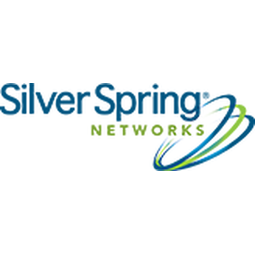
Supplier
Silver Spring Networks (Itron)
Silver Spring Networks is a leading networking and solutions provider for the Internet of Things. Silver Spring’s pioneering IPv6 networking platform provides connectivity for a range of applications to some of the world’s leading utilities and major cities. Silver Spring’s open-standards platform enables multiple applications and services to leverage a common network, control, and data platform. With over 23.6 million devices connected on five continents Silver Spring’s platform supports a wide range of customers, including leading utilities such as Baltimore Gas & Electric, CitiPower & Powercor, Commonwealth Edison, Consolidated Edison, CPS Energy, Florida Power & Light, Jemena Electricity Networks Limited, Pacific Gas & Electric, Pepco Holdings, Progress Energy, and Singapore Power, and cities such as Copenhagen, Glasgow, and Paris.Year founded: 2002
_18.jpg)
Supplier
IBM Watson (IBM)
Watson is a question answering computer system capable of answering questions posed in natural language, developed in IBM's DeepQA project by a research team led by principal investigator David Ferrucci. Watson was named after IBM's first CEO and industrialist Thomas J. Watson. The computer system was specifically developed to answer questions on the quiz show Jeopardy!. In 2011, Watson competed on Jeopardy! against former winners Brad Rutter and Ken Jennings. Watson received the first place prize of $1 million. Watson had access to 200 million pages of structured and unstructured content consuming four terabytes of disk storage including the full text of Wikipedia, but was not connected to the Internet during the game. For each clue, Watson's three most probable responses were displayed on the television screen. Watson consistently outperformed its human opponents on the game's signaling device, but had trouble in a few categories, notably those having short clues containing only a few words. In February 2013, IBM announced that Watson software system's first commercial application would be for utilization management decisions in lung cancer treatment at Memorial Sloan Kettering Cancer Center in conjunction with health insurance company WellPoint. IBM Watson's former business chief Manoj Saxena says that 90% of nurses in the field who use Watson now follow its guidance.







